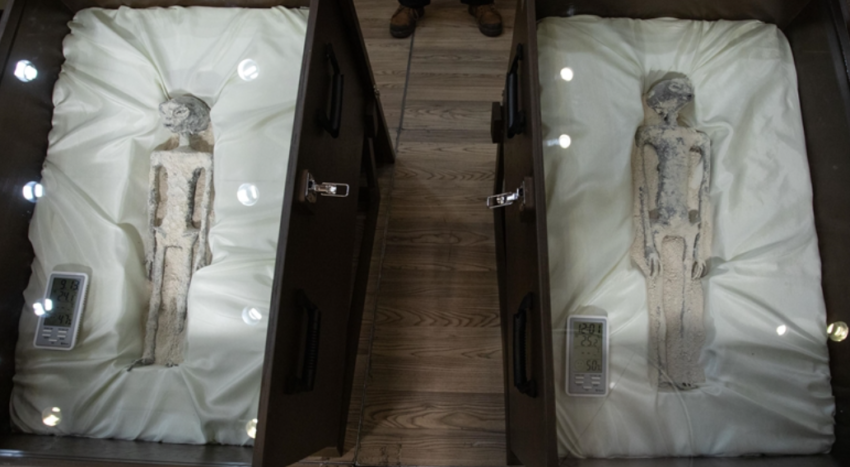UFOs and aliens were in the headlines again this week. Alien mummies (well, whatever they are) were exhibited by Jaime Maussan, who has a history of deceiving the public with allegedly non-human remains. Despite Maussan’s history of faking alien corpses and mummies, the story has expanded far and wide and came up during NASA’s briefing on the new UAP report on Thursday, September 14.
During the briefing, BBC News Digital reporter Sam Cabral asked whether NASA had been in contact with Mexican authorities about the “highly sensationalized revelations” about alleged alien mummies. In response, David Spergel, head of NASA’s UAP study team, said that if there is any evidence of alien remains, those in possession of the material should make it publicly available for research.
In response, scientists claimed that the remains on display in Mexico were assembled from human and animal bones. Then Mexican doctors argued that the two “non-human” alien bodies each belonged to a single skeleton and had not been put together.
The doctors conducted a series of laboratory studies on the remains after academics, scientists and archaeologists claimed they were part of a hoax.
Physicist and presenter Prof. Brian Cox was among the critics, claiming they were too “humanoid” to be real.
The mummified specimens were displayed in glass cases at an official unveiling at the Mexican Congress that caused a stir among UFO enthusiasts. The remains were said to have been found in the Peruvian city of Cusco and are estimated to be 1000 years old.
The Mexico City event was led by journalist and UFO researcher Jaime Maussan, who testified under oath that almost a third of their DNA was “unknown” and that the specimens were not part of “our terrestrial evolution,” Mexican media reported.
“These specimens are not part of our evolutionary history on Earth,” he said in a presentation to Mexican government officials and representatives from the United States. “They are not beings recovered from a UFO crash. Instead, they were found in diatom (moss) mines and then fossilized.”
Prof. Cox is calling for a sample to be sent to biotech company 23andme to independently verify that the samples are not alien.
“It’s very unlikely that an intelligent species that evolved on another planet would look like us,” Prof. Cox said last week.
This is not the first time Maussan has claimed to have made an extraterrestrial discovery. In 2015, he claimed that a mummified body found near Nazca in Peru was that of an alien, but it was later found to be that of a human child.
Academics, archaeologists and scientists say the mummified remains that UFO enthusiasts claim are alien are usually altered human bodies.
They say the rest, especially smaller ones like those on display in Mexico last week, are bodies cobbled together with animal and human bones. But tests by Mexican doctors show that they belong to a single skeleton and were not put together.
Speaking about his discovery, Mr. Maussan told the Mexico City delegation that the samples had previously been examined at the National Autonomous University of Mexico.
He said scientists had used radiocarbon dating to collect DNA evidence and one of them showed that it contained an “egg”.
Julieta Fierro, a scientist at the National Autonomous University of Mexico who has studied Maussan’s test results, sees little mystery in the data. She said the presence of carbon 14 in the studies proved that the samples were associated with the brain and skin tissues of different mummies who died at different times.
Scientists can estimate the specimen’s estimated year of death by measuring the amount of the radioactive carbon 14 isotope that is absorbed into its tissue over time. The amount of carbon-14 in the atmospheres of other planets would not be the same as on Earth, he said.
The results “show nothing mysterious that could point to components of life that do not exist on Earth,” Fierro said.
